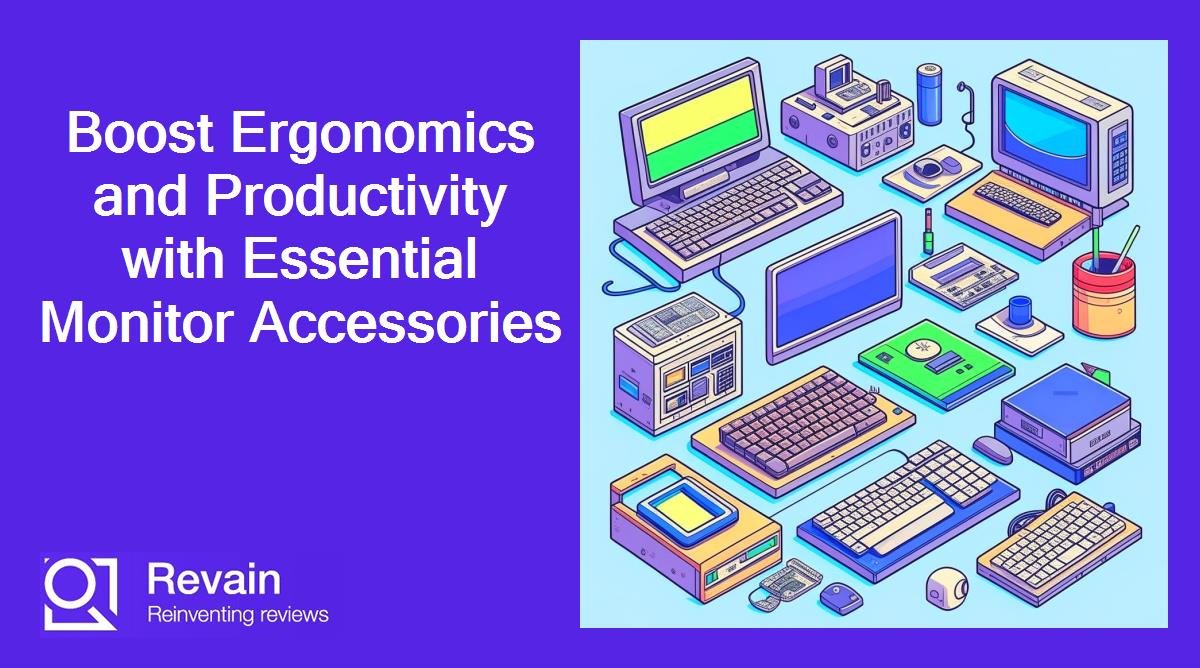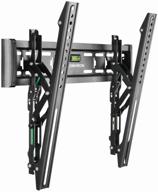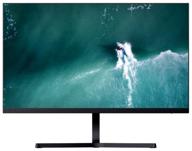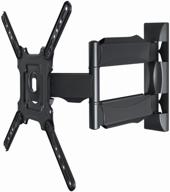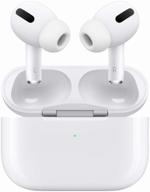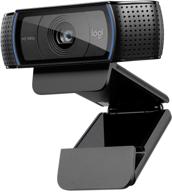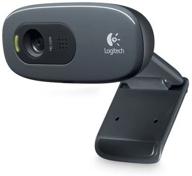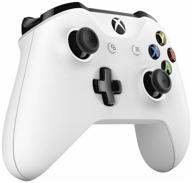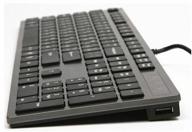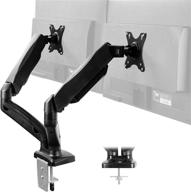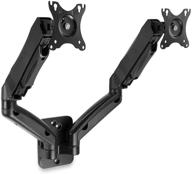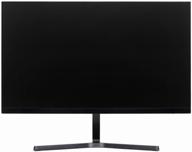Top products in 🖥️ Monitor Accessories
Screen Protectors
Screen protectors are thin plastic films that adhere to the front of devices like phones, tablets, and computer monitors. They serve as a barrier between the screen and outside elements that may scratch or damage it. There are several benefits to using a screen protector:
Scratch Protection
The main purpose of a screen protector is to prevent scratches. Day to day use, keys in your pocket, drops, and scrapes can all lead to unsightly scratches on your screen. A screen protector acts as a sacrificial barrier - instead of the glass getting scratched, the protector film takes the damage instead. They are designed to be replaced over time.
Prevent Cracks
Screen protectors provide a layer of shock absorption for screens. While they cannot prevent major cracks from drops, they help diffuse impact force and prevent minor cracks from forming.
Glare Reduction
Many screen protectors have an anti-glare coating or matte finish that scatters reflective light. This makes the screen easier to view in bright conditions and reduces eyestrain.
Types of Screen Protectors
- Tempered Glass - Made from tempered glass, these provide premium scratch protection and maintain screen clarity.
- PET Film - Made from polyethylene terephthalate plastic, these protectors are affordable and easy to apply.
- TPU - Made from thermoplastic polyurethane, these flexible protectors are self-healing and resistant to yellowing.
Application Tips
To get the most out of a screen protector, it's important to apply it properly:
- Clean the screen thoroughly - Use an alcohol wipe or screen cleaning spray to remove oils and dust particles before application.
- Align carefully - Precisely align the protector using the application tray and press firmly to adhere it.
- Remove air bubbles - Gently push out any air bubbles from under the protector, working from the center outward.
- Allow to cure - It takes 24-48 hours for the protector adhesive to fully cure and adhere tightly.
With proper selection, application, and maintenance, a quality screen protector can effectively protect a device screen from scratching and cracking.
Reduce Neck Strain with Monitor Arms
Working long hours at a computer can lead to neck fatigue and pain. The positioning of your monitor is crucial for maintaining proper posture and reducing strain. Monitor arms allow you to easily adjust your screen height, distance, tilt, and rotation to customize an ergonomic setup.
Height Adjustment
Having your monitor at the proper height helps keep your neck in a neutral, comfortable position. Monitor arms with height adjustment allow you to position the screen so:
- The top of the screen is at or slightly below eye level
- You can view it without bending your neck up or down
Distance Adjustment
Placing your screen at an optimal distance reduces eyestrain and neck craning. Monitor arms allow you to find the right distance so you can:
- View the full screen without excessive head movement
- Sit about an arm's length away from the screen
Tilt and Rotation
Tilting your monitor up or down slightly and swiveling it side-to-side promotes good posture by keeping your head centered over your torso. Monitor arms give you the flexibility to tilt and rotate the screen to find your most comfortable viewing angle.
Arm Type
There are several types of monitor arms to choose from:
- Single arm - Supports one monitor
- Dual arm - Supports two monitors
- Wall mount - Attaches to wall for more desk space
- Clamp mount - Clamps to back of desk
Ergonomic Setup Tips
- Position top of screen at eye level
- Sit an arm's length from screen
- Center screen directly in front of you
- Adjust tilt so screen is perpendicular to your eyes
Investing in an adjustable monitor arm promotes proper ergonomics and can help reduce neck pain and fatigue from computer work.
Another interesting products
Keep Screens at Eye Level with Monitor Stands
Staring at a computer screen positioned too high or low can lead to neck, shoulder and eye strain. Monitor stands provide an adjustable platform to place your screen at an optimal ergonomic viewing level.
Reduce Neck Craning
When your monitor is too low you end up looking down, causing neck flexion. This can compress the spine and lead to neck soreness. Monitor stands allow you to raise your screen to a height where you can look straight ahead without bending your neck down.
Avoid Neck Hunching
Conversely, monitors placed too high lead to neck extension. This causes you to look up for long periods, resulting in neck hunching that tenses muscles. Adjustable stands let you lower your monitor to eye level to maintain a neutral neck posture.
Find Your Optimal Height
The optimal monitor height for most people is with the top of the screen at or slightly below eye level. Monitor stands make it easy to customize the height so:
- Your eyes look straight ahead or slightly downward
- Your neck remains aligned with your torso without slouching or straining
Similar products
Consider Your Monitor Size
Larger monitors may need to be positioned a bit lower than smaller ones so the viewing angle remains perpendicular to your eyes. Monitor stands with a wide range of adjustability provide flexibility for various monitor sizes.
Stand Types
There are a few main types of monitor stands:
- Fixed height - Not adjustable but provides basic elevation
- Adjustable height - Manually raise or lower your monitor
- Ergonomic stand - Angle and height can be optimized for ergonomics
Added Benefits
Beyond positioning your screen at the proper height, monitor stands provide other benefits including:
- Tilting and rotating to reduce glare
- Free up desk space
- Organize monitors and improve aesthetics
Using a monitor stand to correctly elevate your screen promotes proper posture and can reduce neck discomfort from computer work.
Protect Screens from Dust and Damage with Monitor Covers
Computer monitors can easily get dirty from dust, smoke, fingerprints, and other contaminants. Prolonged exposure ages screens faster and degrades display quality. Monitor covers provide an essential layer of protection.
Prevent Dust Buildup
Dust accumulation on a monitor darkens and dulls the screen over time. Monitor covers form a barrier against airborne particulates settling on the display. They can be easily wiped clean while preventing direct contact with the underlying screen.
Reduce Smoke and Vapor Deposits
Smoke residues from cigarettes, candles, incense burners or air pollution can coat monitor screens. Chemical vapors from household cleaners and cosmetics also gradually deposit on displays. Monitor covers shield screens from these residues to maintain brightness and clarity.
Protect Against Scratches
Accidental scratches from keyboards, pens, watches, jewelry or children/pets are common. A monitor cover guards the delicate LCD panel or display glass from superficial scratches and abrasions.
Safeguard Against Impacts
Physical impacts from objects can crack or break monitor screens. Monitor covers provide a cushioning barrier that helps absorb and dissipate force from bumps and blunt collisions.
Types of Monitor Covers
- Flexible fabric - Made from lycra or spandex with an elastic fit.
- Vinyl/PVC - Made from phthalate-free vinyl for a transparent view.
- Microfiber - Provides a soft, microfiber surface to wipe the screen.
Choosing a Cover
Consider these factors when selecting a monitor cover:
- Monitor size - Get a properly sized cover for full screen protection.
- Screen type - Covers optimized for LCD, LED or curved displays.
- Glare reduction - Some covers have anti-glare properties.
Proper Use
- Install cover gently and straighten any wrinkles.
- Clean cover periodically with mild cleaner and microfiber cloth.
- Replace cover if it becomes excessively soiled or damaged.
Protecting your monitor screen from contaminants, scratches and impacts extends its usable life. Monitor covers are an inexpensive safeguard to preserve display quality.
How to use your Amazon Prime to buy Monitor Accessories
Having an Amazon Prime membership gives you access to a wide range of benefits when shopping on Amazon, including fast free shipping and exclusive deals. This makes it easy and affordable to purchase monitor accessories like arms, stands, mounts and screen protectors.
Take Advantage of Free Two-Day Shipping
One major perk of Prime is free two-day shipping on eligible items. This allows you to quickly upgrade your monitor setup without paying extra shipping fees. From monitor stands under $30 to high-end adjustable arms over $200, thousands of monitor accessories ship free in just two days with Prime.
Shop Exclusive Discounts and Deals
Prime members get exclusive access to special bargains and discounts. This includes Deal of the Day savings on select monitor accessories of up to 50% off. Amazon also runs exclusive Prime Day sales featuring deals on popular monitor mounts, arms, stands and more.
Browse Extensive Selection
As an Amazon Prime member you can browse and buy from their unmatched selection of monitor accessories. Find top brands like AmazonBasics, Vivo, Ergotech, and Huanuo for every type of mount, stand or arm for your specific monitor setup needs.
Read Ratings and Reviews
Amazon provides detailed customer reviews and ratings to help you evaluate monitor accessories. See what other customers say about ease of assembly, adjustability, build quality and more. You can buy with confidence after researching products.
Enjoy Fast, Free Returns
If a monitor accessory doesn't meet your expectations, Prime members enjoy free returns within 30 days of receipt. This makes it easy to order multiple options risk-free to find the perfect monitor stand or arm.
With competitive pricing, fast free shipping, wide selection and flexible returns, an Amazon Prime membership is a great way to purchase quality monitor accessories easily.
How To Choose The Right Monitor Stand For Your Needs??
When choosing the right monitor stand for your needs, there are several factors to consider. Here are some things to keep in mind:
- VESA Compatibility: Make sure your monitor is VESA compatible, meaning it has standard mounting holes on the back, before purchasing a third-party stand or mount6.
- Size and Weight of Monitor: Consider the size and weight of your monitor to ensure the stand can support it.
- Number of Monitors: Determine how many monitors you will be using to determine the options and styles available.
- Adjustability: Different monitor arms have different adjustability, so consider how often you need to adjust your screens and in what ways (horizontally, forward/back, tilt, vertically) .
- Mounting Options: Consider the stability of the mounting system, whether it is a clamp mount or a grommet mount, and whether it will fit your work surface.
- Ergonomics: Consider how the stand will affect your posture and eye level, and whether it will reduce neck and eye strain.
- Workspace: Consider the space available on your desk and whether the stand will fit neatly in your workspace.
Monitor Wall Mount
A monitor wall mount can be a great way to save space on your desk or create a more comfortable viewing experience. Here are some things to consider when choosing a monitor wall mount:
- Weight Capacity: Consider the weight of your monitor and choose a wall mount that can support it.
- VESA Compatibility: Make sure your monitor is VESA compatible, meaning it has standard mounting holes on the back, before purchasing a third-party wall mount.
- Adjustability: Different wall mounts have different adjustability, so consider how often you need to adjust your screen and in what ways (tilt, swivel, extension).
- Wall Space: Consider the space available on your wall and whether the wall mount will fit neatly in your workspace.
- Ergonomics: Consider how the wall mount will affect your posture and eye level, and whether it will reduce neck and eye strain.
- Number of Monitors: Determine how many monitors you will be using to determine the options and styles available.
- Location: Take time to survey your wall real estate because where you plan to install a monitor wall mount is critical. No matter a mount’s weight capacity and build quality, it could fail if not securely attached, resulting in damage and even potential injury.






